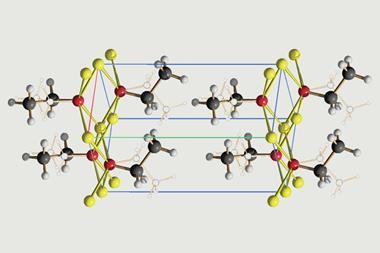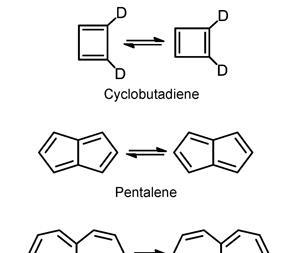Polar Jahn–Teller distortion stabilises unusual molecule

Researchers in Japan have synthesised the first coordination-free germanium analogue of cyclobutadiene. The tetragermacyclobutadiene has a planar diamond-like four-membered germanium ring with no bond alternation, but charge separation on the four germanium atoms. Bulky EMind (EMind = 1,1,7,7-tetraethyl-3,3,5,5- tetramethyl-s-hydrindacen-4-yl) groups stabilise the structure.
The team made the molecule through a reductive coupling reaction of the 1,2-dichlorodigermene, (EMind)ClGe=GeCl(EMind), with lithium naphthalenide. It was isolated as air- and moisture-sensitive, but room-temperature stable, dark red crystals.
The researchers suggest that the polar Jahn–Teller distortion counteracts the system’s cyclic 4π-electron antiaromaticity, in a similar way to the previously reported silicon analogue. They hope the compound will provide further insight into aromaticity and antiaromaticity in small rings.
References
This article is free to access until 22 March 2018
K Suzuki et al, Chem. Commun., 2018, 54, 2200 (DOI: 10.1039/c7cc09443d)











No comments yet